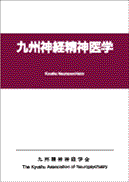Many patients with adolescent or adult high-functioning autistic spectrum disorders suffer from secondary mental disorders, and do not receive mental services or organized consultations. In this study psychiatrists and psychologists held a group on psychotherapy comprising cognitive behavioral therapeutic techniques for 15- to 40-year-old patients with high-functioning autistic spectrum disorders in order to improve communication skills with sessions lasting for sixty minutes once a week at our hospital. All participants were examined using the Wechsler intelligence scale before the group psychotherapy, as we attempted to communicate with all participants based on their traits. Our protocol for psychotherapy began with ice‐breaking technique; for example, tongue-twisters, riddles, charades, etc., followed by practice with self-introduction, job interviews, changing expressions, and playing various roles in terms of apologies, praise, declining requests, and asking questions, etc. The group psychotherapy sessions were held 79 times, and a total of 320 patients participated. Some of the participants showed improved communication skills, as well as remarkable results with respect to employment, including four subjects who found full-time employment, three subjects who found part-time jobs, and two subjects who proceeded to the next stage of their education.
View full abstract
